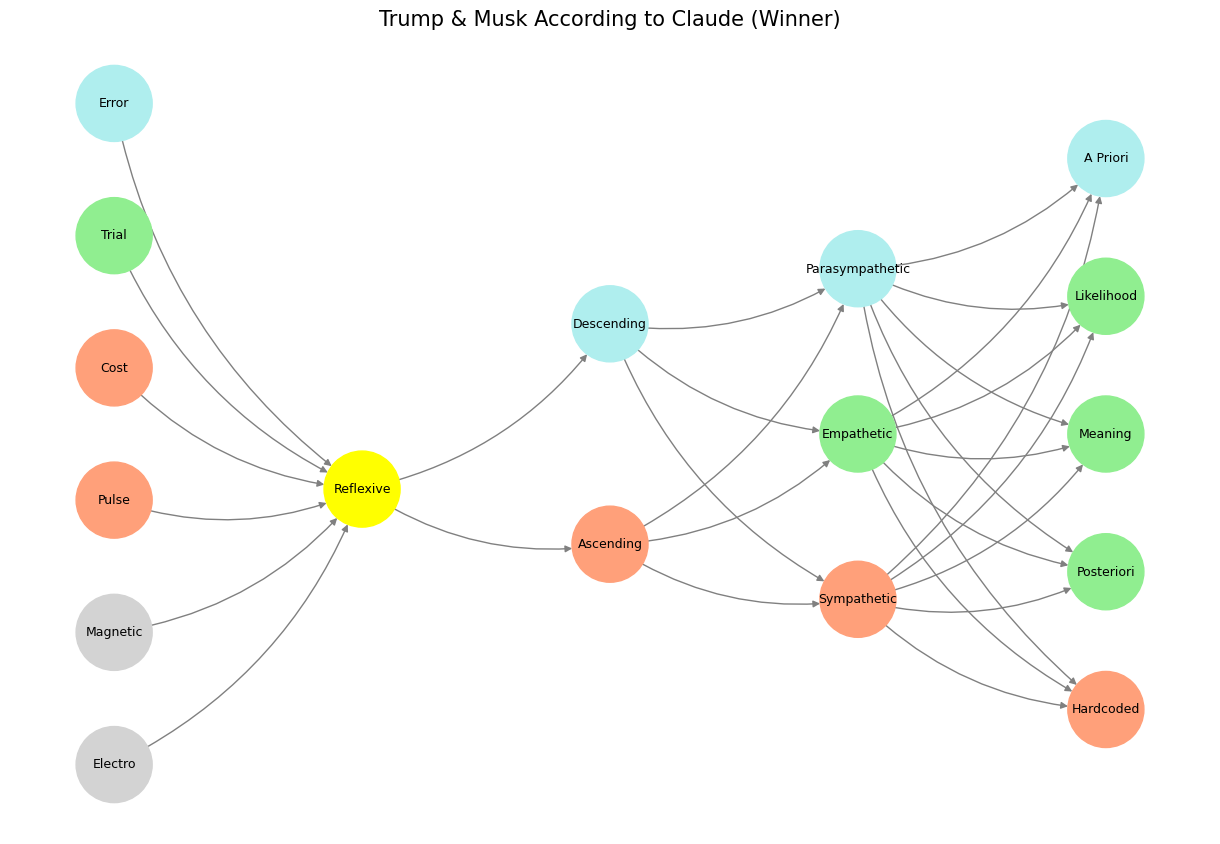Ecosystem#
The Neurological Landscape of Human Interaction: A Journey Through Games and Reflexes
At the most fundamental level, human experience begins with the indifference of the cosmos—a realm of pure chance represented by coin tosses, dice rolls, and roulette spins. These initial interactions mirror the ecosystem’s raw, unbiased information exchange, where results are predetermined and beyond individual control.
As complexity increases, we transition to the poker stage—a domain of urgent, adversarial reflexes deeply rooted in our ancestral neurological programming. Figures like Elon Musk and Donald Trump masterfully exploit this reflexive layer, triggering instantaneous sympathetic nervous system responses. They create high-stakes scenarios that invoke primal fight-or-flight mechanisms, compelling individuals to react from a place of adrenaline-fueled panic rather than calculated reasoning.
The next layer introduces more nuanced engagement, embodied by the razor’s edge of horse racing and Formula One—environments where participants navigate complex, semi-predictable systems. Here, participants possess partial information, with descending neurological tracks allowing for more sophisticated decision-making. The jockey and the race car driver represent this delicate balance between reflexive response and strategic interpretation.

Fig. 5 It Takes AI to Curate Data to Train AI. Isaiah 2:2-4 is the best quoted & also misunderstood article on the conditions of social harmony. Putnams discomforts with the data tells us that he was surprised by what the UN knew half a century earlier and what our biblical prophet articulated several millenia ago. Putnam published his data set from this study in 2001 and subsequently published the full paper in 2007. Putnam has been criticized for the lag between his initial study and his publication of his article. In 2006, Putnam was quoted in the Financial Times as saying he had delayed publishing the article until he could “develop proposals to compensate for the negative effects of diversity” (quote from John Lloyd of Financial Times). In 2007, writing in City Journal, John Leo questioned whether this suppression of publication was ethical behavior for a scholar, noting that “Academics aren’t supposed to withhold negative data until they can suggest antidotes to their findings.” On the other hand, Putnam did release the data in 2001 and publicized this fact. Source: Wikipedia#
Chess and war epitomize the fourth layer—a massive combinatorial search space of emotions and potential interactions. Unlike poker’s immediate urgency, these domains demand strategic thinking, where each move carries profound implications. The key distinction lies in agency: chess pawns follow strict instructions, while human actors in war can unpredictably deviate, introducing an element of profound complexity.
At the highest level, we encounter the most intricate interactions—romantic relationships, spiritual experiences, and profound emotional landscapes. Here, the 17 emotional tokens interweave in an elaborate dance, creating meaning beyond mere transactional exchanges.
The ultimate wisdom lies not in remaining trapped in reflexive responses, but in calming the sympathetic nervous system, engaging the parasympathetic domain, and exploring the rich, nuanced information surrounding us. By doing so, we transcend primitive reaction and enter a realm of strategic, empathetic engagement.
Show code cell source
import numpy as np
import matplotlib.pyplot as plt
import networkx as nx
# Define the neural network fractal
def define_layers():
return {
'World': ['Electro', 'Magnetic', 'Pulse', 'Cost', 'Trial', 'Error', ], # Veni; 95/5
'Mode': ['Reflexive'], # Vidi; 80/20
'Agent': ['Ascending', 'Descending'], # Vici; Veni; 51/49
'Space': ['Sympathetic', 'Empathetic', 'Parasympathetic'], # Vidi; 20/80
'Time': ['Hardcoded', 'Posteriori', 'Meaning', 'Likelihood', 'A Priori'] # Vici; 5/95
}
# Assign colors to nodes
def assign_colors():
color_map = {
'yellow': ['Reflexive'],
'paleturquoise': ['Error', 'Descending', 'Parasympathetic', 'A Priori'],
'lightgreen': ['Trial', 'Empathetic', 'Likelihood', 'Meaning', 'Posteriori'],
'lightsalmon': [
'Pulse', 'Cost', 'Ascending',
'Sympathetic', 'Hardcoded'
],
}
return {node: color for color, nodes in color_map.items() for node in nodes}
# Calculate positions for nodes
def calculate_positions(layer, x_offset):
y_positions = np.linspace(-len(layer) / 2, len(layer) / 2, len(layer))
return [(x_offset, y) for y in y_positions]
# Create and visualize the neural network graph
def visualize_nn():
layers = define_layers()
colors = assign_colors()
G = nx.DiGraph()
pos = {}
node_colors = []
# Add nodes and assign positions
for i, (layer_name, nodes) in enumerate(layers.items()):
positions = calculate_positions(nodes, x_offset=i * 2)
for node, position in zip(nodes, positions):
G.add_node(node, layer=layer_name)
pos[node] = position
node_colors.append(colors.get(node, 'lightgray'))
# Add edges (automated for consecutive layers)
layer_names = list(layers.keys())
for i in range(len(layer_names) - 1):
source_layer, target_layer = layer_names[i], layer_names[i + 1]
for source in layers[source_layer]:
for target in layers[target_layer]:
G.add_edge(source, target)
# Draw the graph
plt.figure(figsize=(12, 8))
nx.draw(
G, pos, with_labels=True, node_color=node_colors, edge_color='gray',
node_size=3000, font_size=9, connectionstyle="arc3,rad=0.2"
)
plt.title("Trump & Musk According to Claude (Winner)", fontsize=15)
plt.show()
# Run the visualization
visualize_nn()


Fig. 6 So we have a banking cartel, private ledgers, balancing payments, network of banks, and satisfied customer. The usurper is a public infrastructure, with open ledgers, digital trails, block-chain network, and liberated customer#

